Introduction: More Than Just a Race – It’s the Heartbeat of F1
In the thrilling, high-octane world of Formula 1, there are races, and then there is the British Grand Prix. More than just another stop on the calendar, it is the spiritual home of motorsport, a place where legends are born, history is made, and the very essence of racing is palpable. Held at the iconic Silverstone Circuit in Northamptonshire, England, the British Grand Prix holds a unique and revered status, not only for hosting the inaugural Formula 1 World Championship race in 1950 but also for its continuous evolution, its passionate crowds, and the sheer unpredictability it often delivers.3 As we stand on the cusp of another exhilarating race day at the 2025 British Grand Prix, the air is thick with anticipation, rivalries are at their peak, and the stage is set for another chapter in its storied legacy. This comprehensive blog post will delve into the rich tapestry of the British Grand Prix, exploring its humble beginnings, the dramatic transformations of Silverstone, the iconic moments that have defined it, the legendary drivers who have conquered its challenging corners, and a detailed look at the enthralling 2025 event currently unfolding.
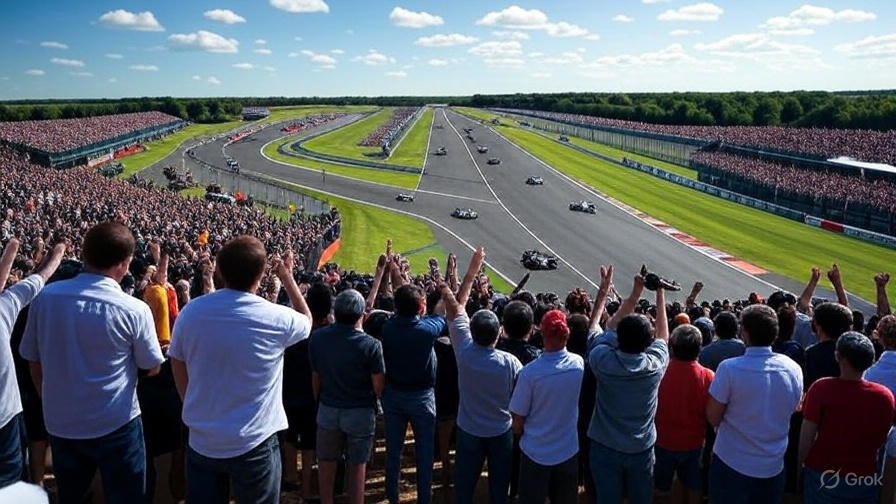
The significance of the British Grand Prix extends far beyond the race itself. It is a pilgrimage for motorsport enthusiasts, a celebration of engineering marvels, and a testament to human courage. Silverstone, the circuit that has become synonymous with the event, is more than just tarmac and grandstands; it is a living museum, each corner whispering tales of past triumphs and heartbreaks. From its origins as a wartime airfield to its current status as a state-of-the-art racing facility, Silverstone has continually adapted, challenging drivers and captivating audiences. The British Grand Prix is a crucible where champions are forged and where the very soul of Formula 1 resides. Its enduring popularity, evidenced by track-record crowds year after year, speaks volumes about its magnetic appeal.
The allure of the British Grand Prix also stems from its role as the de facto home for many Formula 1 teams. The region around Silverstone, often dubbed “Motorsport Valley,” is a hub of innovation and engineering excellence, with the majority of F1 teams headquartered within a short distance of the circuit.4 This geographical proximity fosters a unique connection, making the British Grand Prix a true home race for a significant portion of the paddock and adding an extra layer of emotion for the teams and their dedicated fan bases. This intrinsic link makes the British Grand Prix Learn more about the history of Silverstone Circuit a truly special event.
Silverstone: From Bomber Base to Motorsport Mecca
The story of the British Grand Prix is inextricably linked with that of Silverstone Circuit, a venue with an improbable and fascinating origin story. What is now one of the world’s most sophisticated racing tracks began life as RAF Silverstone, a Royal Air Force bomber station operational during World War II, specifically from 1943 to 1946.5 Its three runways, arranged in a classic triangular pattern, formed the initial outline of the makeshift racing circuit.

The transition from airfield to racetrack was famously informal at first. In September 1947, a group of friends, including Maurice Geoghegan who lived in the nearby village of Silverstone and knew the airfield was deserted, organized an impromptu race.6 This informal gathering saw 12 drivers compete on a makeshift two-mile circuit, an event famously nicknamed the “Mutton Grand Prix” after Geoghegan’s car unfortunately collided with a sheep that had wandered onto the track. This rather humble, yet iconic, beginning set the stage for something much grander.
Recognizing its potential, the Royal Automobile Club (RAC) leased the airfield in 1948 and established a more formal racing circuit.7 The initial races were held on the runways themselves, characterized by long straights and tight hairpin corners marked by hay bales. However, for the 1949 International Trophy meeting, and crucially for the 1950 and 1951 Grand Prix races, the racing was switched to the perimeter track. This layout, with its sweeping, high-speed corners, laid the foundation for Silverstone’s reputation as one of the fastest circuits in the world.
The pivotal moment in Silverstone’s history, and indeed in motorsport history, came on May 13, 1950. On this date, Silverstone hosted the very first race of the newly established Formula 1 World Championship. Giuseppe “Nino” Farina, driving an Alfa Romeo, claimed victory, etching his name and Silverstone’s into the annals of sporting legend. This event officially launched what would become the pinnacle of motorsport, forever associating the British Grand Prix with the genesis of Formula 1.
Over the decades, Silverstone has undergone numerous modifications and redesigns, adapting to changing safety standards and evolving car performance.8 Notable changes include:
- 1952: The start line was moved between Woodcote and Copse, a layout that remained largely unchanged for 38 years.
- 1975: A chicane was added at Woodcote to control speeds, a sign of increasing car performance demanding safety interventions.
- 1991: A major redesign transformed the circuit from an ultra-fast layout to a more technical challenge.9 The iconic Maggotts, Becketts, and Chapel complex was modified to create a demanding left-right-left-right-left sequence.
- 1994: Following tragic incidents elsewhere in F1, further safety modifications were implemented, including re-profiling Copse, Stowe, Abbey, and Priory corners to be slower with increased run-off areas.10
- 2010: The significant addition of the “Arena” section, moving the track infield to create new spectator areas and a more complex series of corners.11
- 2011: The start/finish straight and pit building were moved from between Woodcote and Copse to between Club and Abbey, creating the layout largely seen today.12
- 2020: The straight between Club and Abbey was officially renamed the “Hamilton Straight” in honor of Lewis Hamilton’s record-breaking achievements, a testament to the circuit’s willingness to acknowledge its contemporary heroes.13
These continuous evolutions have ensured that Silverstone remains a challenging and relevant circuit for modern F1 cars, a dynamic testament to its enduring importance to the British Grand Prix Explore the detailed history and various configurations of Silverstone Circuit.
Legendary Moments and Unforgettable Races
The British Grand Prix has been the stage for some of the most iconic and dramatic moments in Formula 1 history, contributing significantly to its legendary status. From nail-biting finishes to heroic drives, Silverstone has consistently delivered unforgettable spectacle.
One of the most emotional victories belongs to Nigel Mansell in 1992. “Red 5,” as his car was affectionately known, was dominant, and after securing the win, Mansell gave an iconic lift to his great rival Ayrton Senna on his Williams-Renault, a moment of sportsmanship that transcended fierce competition. This image, of two legends sharing a triumphant ride, is etched into the minds of F1 fans globally.
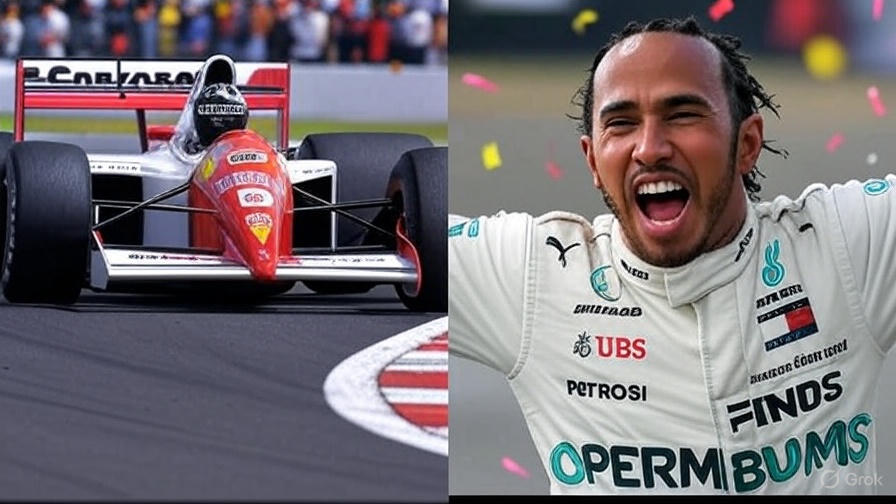
Lewis Hamilton’s nine victories at the British Grand Prix are a record for most wins by one driver at a single circuit, surpassing Michael Schumacher’s eight wins at Magny-Cours. Each of Hamilton’s wins at Silverstone, particularly his first in 2008 in torrential rain and his more recent triumphs, have been met with thunderous roars from his home crowd, creating an atmosphere unmatched anywhere else. His 2024 victory, despite a challenging start to his season with Ferrari, was particularly poignant, securing his ninth triumph and solidifying his place as the “King of Silverstone.” The sheer outpouring of support for Hamilton at his home race is a phenomenon in itself, making every British Grand Prix Watch highlights of Lewis Hamilton’s victories at Silverstone a truly special occasion.
The 2008 British Grand Prix stands out as a masterpiece from Hamilton. In treacherous wet conditions, he delivered a dominant performance, winning by over a minute, a testament to his unparalleled skill in the rain. This race cemented his status as a future champion and showcased the unpredictable nature that often defines the British Grand Prix when the weather intervenes.
Other notable moments include:
- 1951: José Froilán González gives Ferrari their first-ever F1 World Championship win, fittingly at the sport’s birthplace.
- 1987: Nigel Mansell’s dramatic last-lap overtake on Nelson Piquet after a spectacular pit stop, igniting a jubilant crowd and cementing his “Lionheart” reputation.
- 1998: Michael Schumacher controversially wins after taking a stop-go penalty in the pit lane on the final lap, leading to confusion and an FIA investigation.14
- 2020: Lewis Hamilton winning on three wheels after suffering a late puncture, crossing the line with sparks flying, showcasing incredible composure under duress.15
These moments, and countless others, contribute to the rich tapestry of the British Grand Prix, making it a fixture that consistently delivers drama, excitement, and iconic images etched into motorsport lore. The passionate “Silverstone roar” from the British fans is a key ingredient, fueling the drivers and creating an electrifying atmosphere that makes the British Grand Prix Discover 5 unforgettable moments from the British Grand Prix a truly unique event.
The 2025 British Grand Prix: Qualifying Drama and Race Day Anticipation
As the sun rises on race day, Sunday, July 6, 2025, the British Grand Prix is poised for another thrilling chapter. The qualifying session held yesterday, Saturday, July 5, delivered its usual dose of drama and surprises, setting the stage for what promises to be a captivating battle on the iconic Silverstone tarmac.
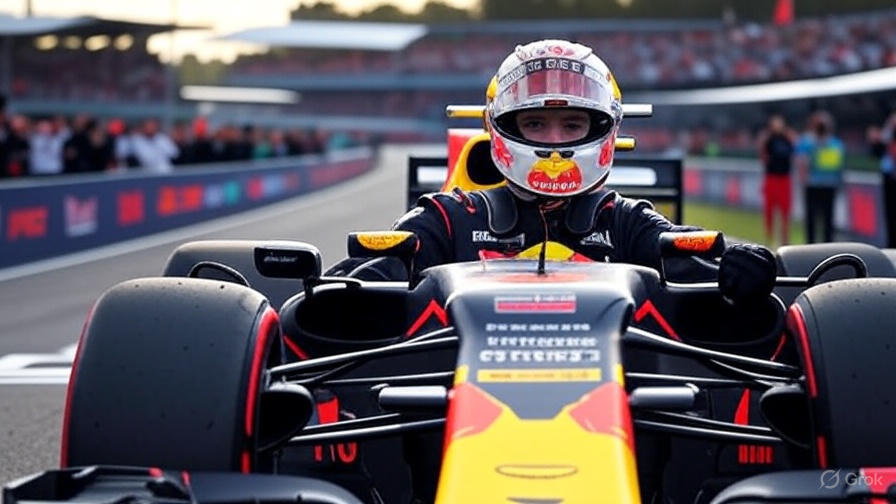
Max Verstappen, the reigning world champion, once again demonstrated his exceptional talent by snatching pole position from McLaren’s Oscar Piastri with a masterful final lap.16 His 1:24.892 lap time was just 0.103 seconds quicker than Piastri, a testament to the razor-thin margins at the front of the field.17 This pole came as something of a surprise, as Verstappen and Red Bull had reportedly struggled with balance issues on Friday, making his qualifying performance a true display of driver skill and team recovery.18 He’s known for finding that “tiny window of opportunity” and exploiting it perfectly.
The McLaren duo, Oscar Piastri and Lando Norris, will start from second and third respectively, positioning them perfectly to challenge for victory at their team’s home race (McLaren is based in nearby Woking).19 Norris, in particular, will be looking for a breakthrough victory at Silverstone, a race he openly admits he would trade all his other wins for, including his recent Monaco Grand Prix triumph.20 The “Landostand” – a dedicated fan area for Norris – is a visible sign of his growing status and the immense support he garners from the home crowd.21
Mercedes’ George Russell put in a strong performance to qualify fourth, ahead of Lewis Hamilton in his Ferrari in fifth.22 This makes it three British drivers in the top five grid places, a source of immense pride for the home fans. Hamilton, despite his record nine wins at Silverstone, has faced a challenging first season with Ferrari, but his pace in Friday practice hinted at potential. He remains hopeful that the “magic here at Silverstone” and potential weather changes could boost his chances of a tenth victory. Ferrari’s Charles Leclerc will start sixth.23
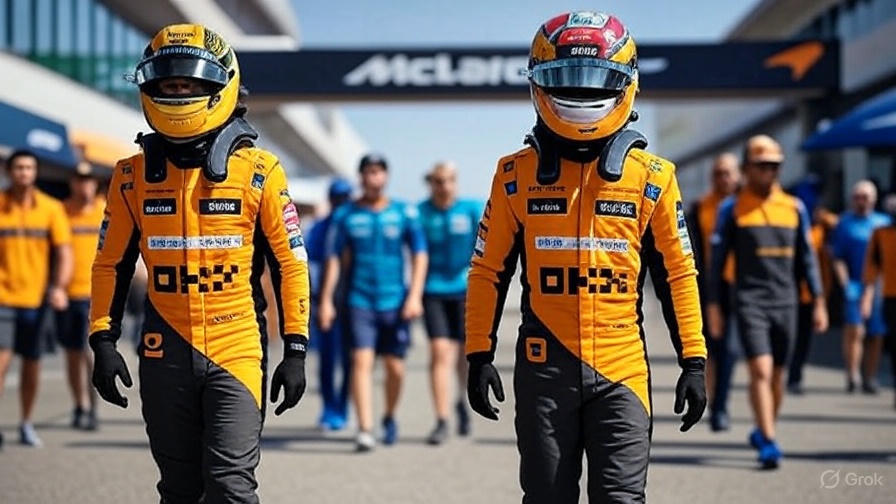
However, the grid isn’t without its complications. Rookie drivers Kimi Antonelli (Mercedes) and Oliver Bearman (Haas), who qualified an impressive seventh and eighth, both face grid penalties.24 Antonelli has a three-place drop for hitting Verstappen at the Austrian Grand Prix, while Bearman received a 10-place penalty for a red flag infringement in FP3.25 Alpine’s Franco Colapinto also suffered a heavy crash in qualifying, adding to the drama.26 The complex nature of the grid, combined with the unpredictable British weather, sets the stage for a truly unpredictable British Grand Prix See the full qualifying results and updated grid for the 2025 British Grand Prix.
Crucially, heavy rain has been falling at Silverstone on Sunday morning, potentially mixing up team strategies and adding an extra layer of challenge.27 While Max Verstappen’s Red Bull is exceptionally fast in a straight line with a lower-downforce setup, the wet conditions and high-speed corners of Silverstone demand excellent tire management and a different approach. The stage is set for a strategic battle, where tire choices, pit stop timings, and driver skill in changeable conditions will be paramount. The 2025 British Grand Prix Get the latest weather forecast for the British Grand Prix is shaping up to be an absolute classic.
The Fan Experience: A Mecca for Motorsport Enthusiasts
Beyond the on-track action, the British Grand Prix offers an unparalleled fan experience, solidifying its reputation as a true pilgrimage for motorsport enthusiasts. The sheer scale of attendance is staggering; the 2024 event attracted a track-record race-day crowd of 164,000, with attendance over the entire weekend reaching an astonishing 480,000.28 This immense crowd creates an electric atmosphere, with the “Silverstone roar” a truly unique auditory phenomenon that elevates the racing experience.
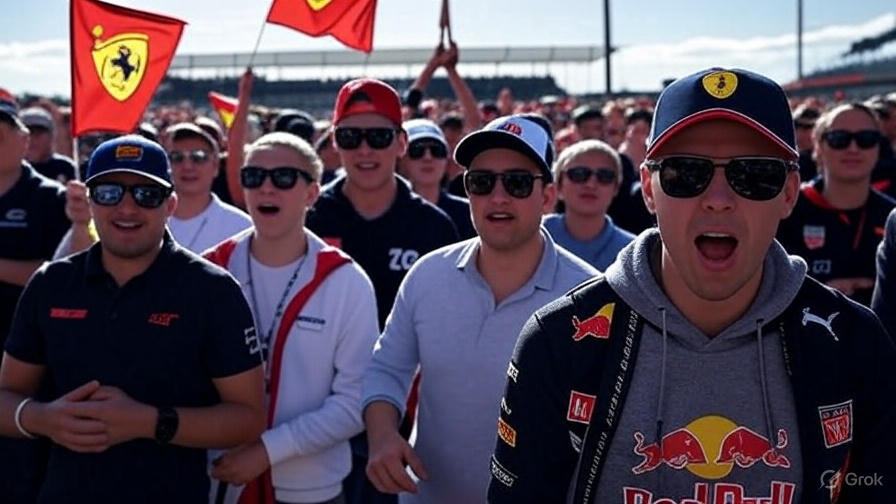
The circuit facilities are designed to cater to this massive influx of fans, offering numerous grandstands, viewing banks, and hospitality areas. Beyond the racing, the British Grand Prix weekend is a festival of motorsport. It features support races from categories like Formula 2 and Formula 3, providing action throughout the day.29 There are also historic F1 car demonstrations, driver parades, fan zones with interactive displays, live music, and celebrity appearances.30 The sight of Hollywood actor Keanu Reeves intently watching qualifying in 2025 further highlights the event’s broad appeal.31
The phenomenon of dedicated fan stands, like the “Landostand” for Lando Norris at Stowe Corner, exemplifies the deep connection between drivers and their home crowd. These areas become a sea of team colors and enthusiastic support, creating a unique micro-atmosphere within the larger event. For many, attending the British Grand Prix is a cherished annual tradition, a chance to immerse themselves in the sport they love, share the passion with fellow fans, and witness history unfold live. The sheer scale and passion of the fans truly make the British Grand Prix Find official information and tickets for the British Grand Prix an unforgettable experience.
The Enduring Legacy and Future of the British Grand Prix
The British Grand Prix occupies a unique and irreplaceable position in the world of Formula 1. Its historical significance as the birthplace of the F1 World Championship, coupled with the continuous evolution of the Silverstone Circuit, ensures its enduring relevance. It is a race that consistently challenges drivers, produces thrilling spectacles, and draws unparalleled crowds.
The commitment to continuous improvement, both in terms of track safety and fan experience, reflects Silverstone’s dedication to remaining a premier motorsport venue.32 The circuit’s role as the heart of “Motorsport Valley” further solidifies its importance to the sport’s ecosystem, fostering innovation and talent. As Formula 1 expands its global footprint and introduces new venues, the British Grand Prix remains a vital anchor, a link to the sport’s glorious past while embracing its dynamic future.
As the cars line up on the grid for the 2025 British Grand Prix, amidst the roar of the engines and the fervent cheers of the crowd, one can feel the weight of history and the promise of future legend. Whether it’s a veteran claiming another victory or a new star rising to the challenge, the British Grand Prix will undoubtedly add another thrilling chapter to its illustrious story, reaffirming its status as the heartbeat of Formula 1.